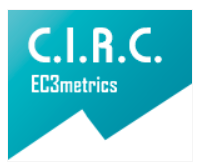Content Validity - Scale "Abbreviated Profile of Hearing Aid Performance".
Validez de Contenido - Escala “Abbreviated Profile of Hearing Aid Benefit”
Main Article Content
This study aims to achieve content validity of the scale APHAB order to adapt it to the Colombian population; which will allow future determine user satisfaction; facilitating
knowledge of performance-related parameters of the hearing aid, use and exploitation of this in relation to the patient. This study sought by the content validity of the scale
APHAB observe how reliable are the verification methods for adapting audio-prosthesis, security and stability they provide to the population, benefiting the role of the audiologist.
Psychometric a quantitative descriptive study was conducted by the APHAB scale. The results show that in general the applicability of the APHAB scale in proportional terms is 88.2%
showing that there are no linguistic or semantic by patients in the study in items read when applying the scale difficulties, evidence the validity of the scale is
homogeneous population, taking into account changes in the phase of expert judges.
Downloads
Publication Facts
Reviewer profiles N/A
Author statements
Indexed in
- Academic society
- Bogotá: Corporación Universitaria Iberoamericana
- Publisher
- Bogotá: Corporación Universitaria Iberoamericana
Article Details
ELFA. (2014). Asociacion española de logopedia, foniatria y Audiologia e Iberoamericana de Fonoaudiología. Recuperado el 05 de Diciembre de 2015, de Audiología Especialidades:
http://www.aelfa.org/audiologia.asp
ASHA. (2012). La pérdida de audición y la edad. Recuperado el 02 de Diciembre de 2014, de http://www.asha.org/uploadedFiles/La-perdida-de-audicion-y-la-edad.pdf
ASHA. (2013). ASHA. Recuperado el 05 de Diciembre de 2015, de Audiología Serie Informativa. El funcionamiento de los auxiliares auditivos: http://www.asha.org/uploadedFiles/
AIS-Learning-Hearing-Aids-Spanish.pdf
Carvajalino, I. (2010). Ganancia Funcional en niños con Neuropatía Auditiva. Bogota: CINDA.
Cox, R. (1995). The Abbreviated Profile of Hearing Aid Benefit. The (ASHA, 2013)Officual Journal of the American Society .
Español, C. C. (2004). La Deficiencia Auditiva. Recuperado el 23 de Noviembre de 2015, de Once - Sordoceguera: http://www.once.es/otros/sordoceguera/HTML/capitulo02.htm
Hernández Sampieri, R., Fernández Collado, C., & Baptista Lucio, P. (2006). Metodologia de la Investigacion. MC Graw Hill.
Northern, D. &. (1991). Hearing and children Baltimore . Estados Unidos: Williams and Wilkinds .
Puyuelo, M. (2000). Evaluación del Lenguaje. Barcelona: Masson S.A.
Rángel, M. P. (2004). Amplificación, El proceso de adaptación. Encolombia, 1.
Rángel, M. P. (2011). Revista Otorrinolaringología y Cirugía de Cabeza y Cuello. Otorrinolaringología y Cirugía de Cabeza y Cuello, 1.
Republica de Colombia, Ministerio de Salud. (1993). Resolución nº 008430 de 1993. Cali, Valle del Cauca, Colombia.
Sandlin, R. (2000). Hearing Aid Amplification Technical and Clinical Considerations . San Diego, California : Singular .
Stach, B. A. (2010). Clinical Audiology An Introduction. Detroit, Michigan: Delmar.
Zenker, F. (2001). Medidas en oido real mediante sonda microfonica. Definicion y aplicaciones. Revista Electronica de audiología, volumen 1.
Zenker, F. (2006a). La obtención de medidas en oído real mediante sonda microfónica. Consideraciones prácticas. Revista Electronica de audiología, Volumen 3.
Zenker, F. (2006b). Deficiencia, Discapacidad y Minusvalía auditiva. Auditio: Revista Electronica de Audiología, Volumen 3, Pagina 01.














